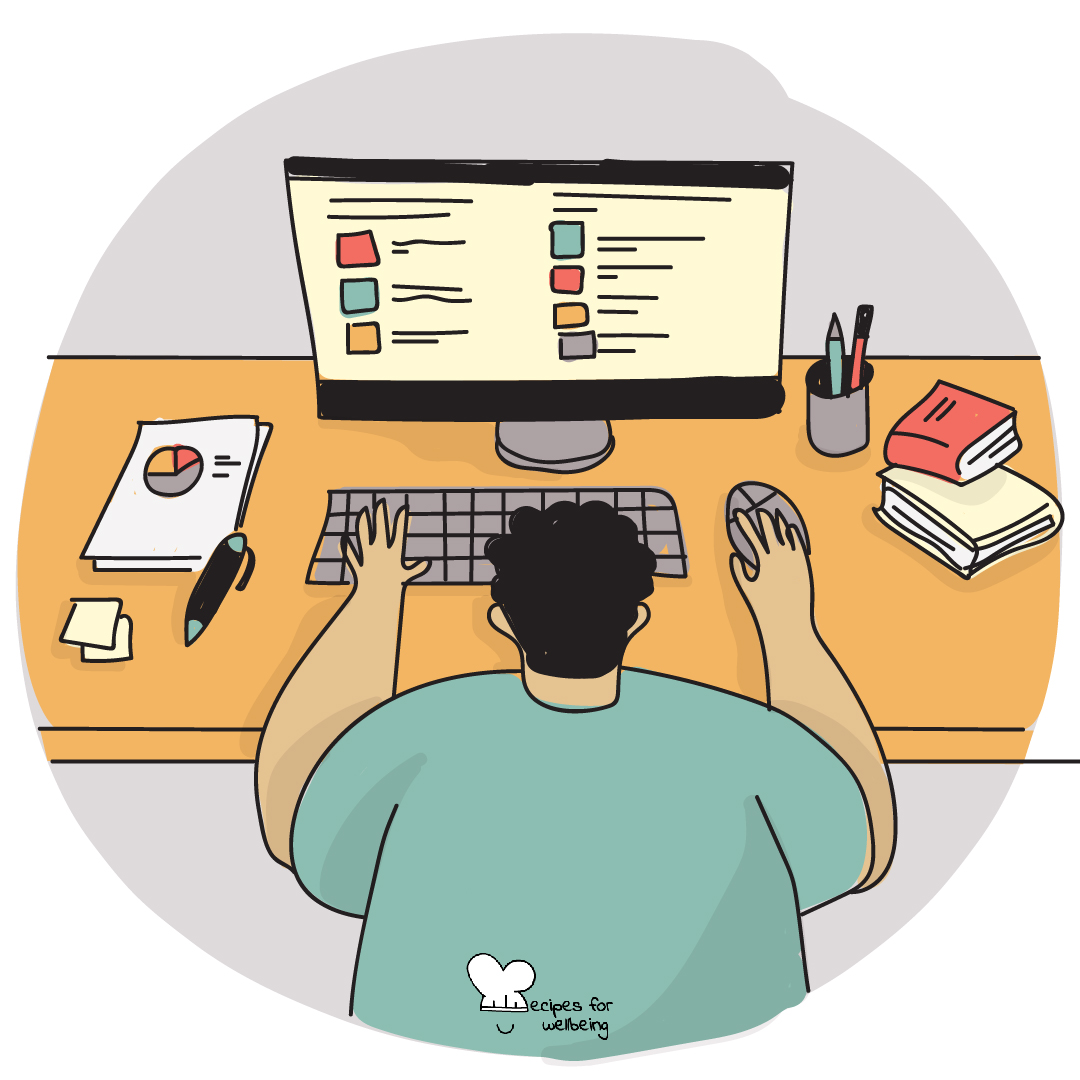
Creating a 4-day workweek
The measure of intelligence is the ability to change. —Albert Einstein
👥 Serves: 1 person, 11-25 people, 2-10 people, 26-40 people, 41+ people
🎚 Difficulty: Hard
⏳ Total time: Ongoing
🥣 Ingredients: Open mind and willingness
🤓 Wholebeing Domains: Accomplishments, Community, Liberatory Learning, Radical Care, Rest
💪 Wholebeing Skills: Boundary setting, Challenging, Discernment, Feedback, Inquiry, Legacy, Liberation, Non-performing, Time management

Creating a 4-day workweek
📝 Description
Evaluating and implementing a four-day workweek for organisations.
Iceland took the world stage in July 2021, after introducing its four-day workweek on a trial basis, which was met with “overwhelming success”. Workers in Iceland did not have to sacrifice their pay and experienced noticeable benefits in their wellbeing including decreased stress and burnout, improved overall health, and work-life balance.
From the employer’s point of view, a team that is healthier and happier, is likely to be more productive, right? Right! That is exactly what happened! Productivity levels during the trial in Iceland remained either the same or improved. Other companies including Microsoft’s Japan office closed on Fridays for one month and saw a dramatic 40% increase in productivity.
These experiences corroborate with other research that highlights that the average person can only concentrate on a project for about 5 hours, not 8, like the traditional workday. Since working from home increased the last few years due to the COVID-19 pandemic, many employees have recognised that they can get more out of their life and their days and want to experience the benefits of flexible work. The future is flexible!
This recipe has been adapted from the work and research of Ashley Whillans, Assistant Professor of Business Administration, Organisations and Market units at Harvard Business School, and Charlotte Lockhart, a business advocate, investor and philanthropist, and CEO for the Four-Day Week Global campaign, by our wellbeing content writer collaborator Marissa Del Mistro.
👣 Steps
Step 1 – Determine the ‘why’ (>1 hour)
Spend time reviewing the organisation’s mission, guidelines, and outputs. Could productivity be supported with a shorter workweek? Why? Is it in line with your current policies? Some examples of possible “whys”:
- The four-day workweek will allow more creative output from the team.
- A three-day weekend allows for people to focus on personal goals, health, be with their families, volunteer regularly in their community, and see the world while developing passions and hobbies outside work.
- The four-day workweek will foster a more productive workforce.
Step 2 – Create an employee-driven subcommittee (ongoing)
Naturally, with change come questions! Strong leadership always takes the time to lead a productive discussion and answer questions.
Employees should have a large say in how the four-day workweek will impact them and how the new plan could come into effect. They know their job best, so allowing employees to lead and analyse when the best day “off” would be is wise.
This can be done effectively by creating an employee-driven subcommittee to identify and critically analyse the four-day workweek. This subcommittee can help form the better part of the new policies, the organisation’s mission, and guidelines. Every organisation is different, but for the four-day work to be successful, it will require a work culture of honesty, trust, and accountability.
Here are some questions that your team may:
- What if a client has a work emergency on the day off? How can we manage expectations with stakeholders?
- Will this impact my yearly annual leave allowance?
- Will this mean the rest of my work week is busier?
- Is this going to be on a trial basis or long-term?
- Will there be any legal issues we should consider?
- What will be the best method of sharing our new ideas with the wider team?
Step 3 – Communicate with clients and stakeholders (ongoing)
If applicable, speak to all relevant external parties on how this may impact them and the working relationship. It will mean reassuring them that the team will be doing the same work albeit a little differently.
Step 4 – Pilot practice (~2 months)
Time to rev up the engine on the new four-day workweek! The pilot stage is to test the waters and see what comes up. Your individual company will determine how long this stage should be, but a few months is a good starting place, at least, to do an initial assessment.
Please note that will be the hardest stage of the plan. It is likely that many problems will arise, including work boundaries, communication, workload, and more. Remind your team that problems do not indicate failure but instead opportunities for growth and more change.
Step 5 – Assess the pilot stage (varies)
After the determined time for the pilot has passed, it is important to assess the success, failures, and everything in between.
As the main goals of the four-day week are to increase employee wellbeing and satisfaction, you can use qualitative metrics to determine this. This will look different for every organisation but could be surveys, interviews, or focus groups. Questions should be focussed on stress levels, work-life balance, happiness, motivation, and overall quality of life. Did people take fewer sick days during the pilot? Did people feel they were able to leave work responsibilities at work? What did management notice about the attitudes at work?
These methods can be extended to stakeholders and/or clients if beneficial to determine their satisfaction, communication with team members, and quality of work and outputs.
Another main goal of the four-day workweek is to improve productivity. Depending on the industry, quantitative methods could be determined on how many products were sold, how many new contracts were signed, or average closing times. Other industries might be based more on quality and amount of content created and the date from online site visits or social media engagement.
Other methods can look at break levels, meeting times, and times that the team was working until. You don’t want your team feeling rushed or experiencing time constraints.
It could be wise to bring in a consultant or other specialist at this stage, who can help your team determine the outcomes of the pilot.
Step 6 – Enforce (ongoing)
It’s time to enforce the four-day workweek!
Following the detailed analyses of the pilot, you can now focus on empowering your team to break out of the five-day workweek routine into the new plan. It will be important to continue to implore the qualitative and quantitative metrics to track success and continue with the employee-led subcommittee for ongoing evaluation.

